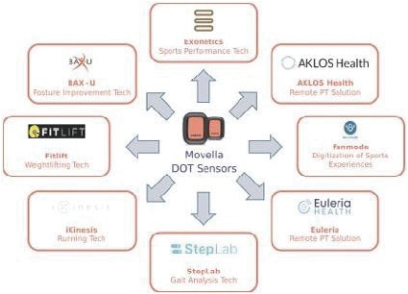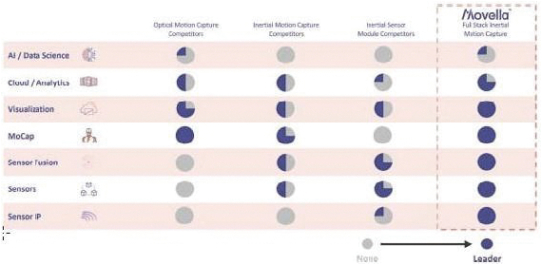cases given inflexibility of environment and location Broad set of use cases due to lower cost, greater flexibility, higher portability and ease of use Prevalent motion capture use cases today include:

|

|
| • | Entertainment. Motion capture is primarily used in professional applications today, with customers including movie studios, video game developers, live entertainment, and education platforms. Movie studios utilize motion capture to bring popular superheroes, villains and other digital characters to life. Video game producers utilize motion capture to integrate real human movement into fight sequences and action sports that recreate a true-to-life experience for gamers, with the expansion of recording motion of a single individual to recording the movement of entire teams. Live entertainers in the music industry utilize motion capture to reach fans around the world by performing virtual concerts and performances. |
| • | Health and Sports. Many different disciplines use motion analysis systems to capture movement and kinematics of the human body. Increasingly, researchers endeavor to better appreciate the relationship between the human motor control system and gait dynamics. The most common fields that utilize motion capture are biomechanics, ergonomics, and sport science studies. In addition to motion capture, cloud- based platforms enable users, including athletes, teams, leagues, sports medicine professionals, and orthopedic clinics to make informed decisions based on combined tools, information, and analytics to optimize performance, prevent injury, and accelerate recovery. These systems absorb and process data from a large variety of biomechanical and biometric devices, inertial sensors, and motion capture systems. In addition to the health and sports markets, factories and warehouses in the corporate sector are active users of these systems to measure ergonomics in facilities and workplaces for repetitive motion injury avoidance and workers compensation purposes. |
| • | Automation and Mobility. These markets have long utilized inertial sensors to calculate the position and orientation of vehicles and robotics. Historically these inertial sensors were large, expensive analog devices that were only adopted by the high-end aviation and aerospace industries. With the miniaturization of these inertial devices (accelerometers, gyroscopes, and magnetometers), higher-volume applications such as drones, warehouse robotics, and autonomous vehicles have adopted these sensors. The same core inertial sensors used in motion capture applications are encapsulated in industrial-grade housings to service these markets. In order to enhance location services, geo-spatial and optical mapping technologies have been integrated with these inertial sensor modules. |
Emerging high-growth market opportunities include:
| • | Next-generation entertainment, gaming, and live streaming. With the mass expansion and adoption of streaming platforms in recent years, there has been an increased need for content which includes motion capture, creating a new class of independent creators that generate their own motion capture-based content that they publish directly to their audiences. Virtual streamers, or vTubers, have emerged on popular gaming, entertainment and social media platforms as real-time virtual characters to interact with their audiences. New interactive platforms, such as Twitch, not only create new use cases for motion capture, but also present monetization opportunities for digital asset marketplaces, in-stream advertising, and audience interaction-based revenue. |
107



